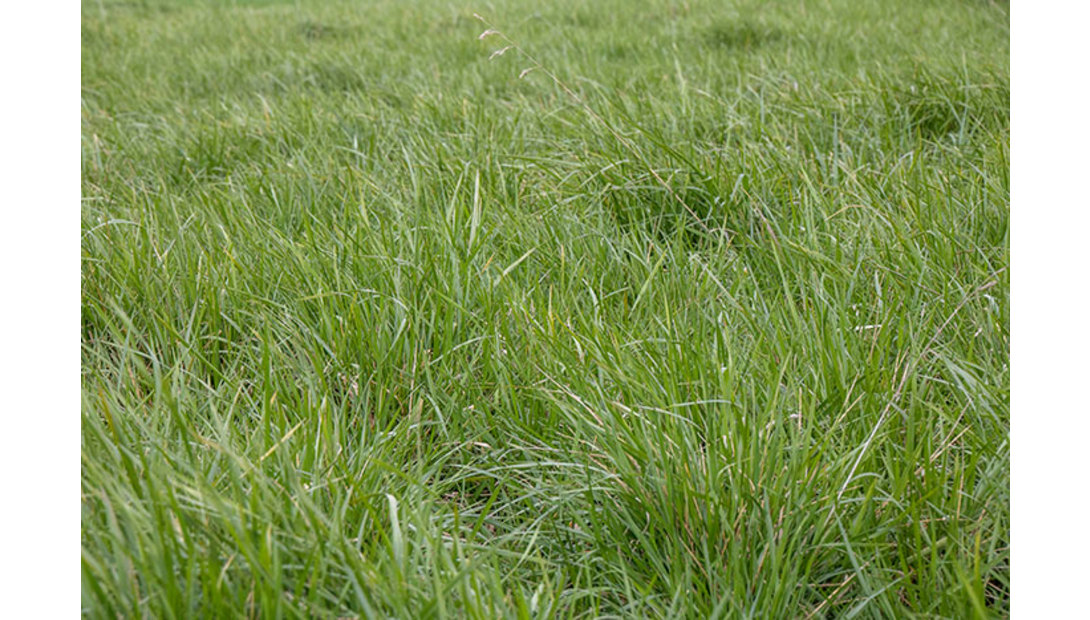
Successful winter grazing starts with planning before the first blade of grass appears in the spring. While it may seem that summer has just arrived, it is already time to begin stockpiling pastures for winter grazing.
How long you should let pastures stockpile depends on two primary factors:
1. Whether the pasture is predominantly cool-season (CSG) or warm-season grasses (WSG), and
2. The class of livestock to be overwintered.
Generally speaking, cool-season species are a better choice for winter grazing in most of the U.S. because they continue active growth much later in the season compared to WSG; CSG are typically going to be fresher and higher in nutritive value. Many CSG will also weather quite a few frosts before they become fully dormant. In some parts of the U.S., CSG may not go fully dormant at all and maintain a low level of growth throughout the winter.
A key piece of the stockpiling plan is knowing how long to allow the forage to accumulate through the latter part of the growing season. In areas receiving at least 25 to 30 inches of precipitation annually, or where irrigation is available, we generally recommend a stockpiling period of 60 to 75 days to optimize yield and quality for CSG. Allowing pastures to stockpile longer than 75 days generally does not give any greater forage yield but does result in lower quality forage going into winter.
To decide when you should begin stockpiling CSG pastures, first determine when your active growing season ends. For example, if you choose November 1 as the end of your growing season, back up 60 to 75 days to identify the optimal dates for beginning to stockpile pastures. In this case, the optimal start dates would be about August 15 to 31. A nice by-product of stockpiling pastures for 60 to 75 days is that it also allows almost all legume species a long enough recovery period to flower and set seed for natural reseeding.
Protein decline
The optimal stockpiling period for WSG is much shorter. Protein content of most WSG declines rapidly with plant maturity. Allowing just 40 to 50 days to stockpile will result in higher protein levels in the forage and help reduce the need for and cost of protein supplementation. Some species such as bermudagrass are more notorious for rapid protein decline. Keep the stockpiling period closer to just 40 days if maintaining higher protein levels is a priority. Species known for maintaining higher quality can be stockpiled for longer periods.
The end of the growing season for WSG tends to be more consistent and predictable than the end of the season for CSG. Growth and heading of WSG is driven by accumulated heat units. Once daily temperatures drop below the baseline for counting heat units, growth screeches to a halt. Very few perennial WSG will continue growing after a killing frost. Use the same process of backing up 40 to 50 days from the expected date of first killing frost and begin stockpiling WSG at that time.
Know what they’re eating
Understanding the nutritional needs of your livestock is the other key component of winter grazing. Properly stockpiled CSG may meet all the needs of your livestock without additional supplementation. Tall fescue and meadow bromegrass are excellent choices for stockpiling because they maintain high protein content and digestibility well into the winter months.
Dry, pregnant spring-calving cows are the easiest class of beef cattle to graze all winter on stockpiled forage, but we also ran fall-calving cows through the entire winter in Missouri on stockpiled cool-season grass-legume mixtures with excellent results. Dry, pregnant ewes can also be easily maintained on stockpiled pastures.
Dry dairy cows from some breeds can be overwintered on stockpiled pastures. These tend to be lower producing lines of colored dairy breeds. Dry cows from some high output Holsteins typically have maintenance requirements too high for most stockpiled pastures to meet.
Supplement as needed
Growing livestock may not do nearly as well as mature cows due to their requirement for a higher level of digestible energy. Often, we see growing stock on dormant forage being supplemented with protein, but not energy. Disappointing performance is more often related to energy deficiency rather than protein deficiency.
If you plan to run growing animals on stockpiled pasture, that is when shortening the stockpiling period comes into play. A cool-season grass-legume mixture stockpiled for just 50 to 60 days will go into winter with a higher crude protein and digestible energy level. Recognize the tradeoff is lower total yield. This is where good cost analysis is essential. Sometimes it may make sense to push for higher stockpile yield and plan to supplement protein if needed. Other times, when supplement costs are higher than normal, changing your stockpiling strategy may be the better choice.
Successful winter grazing really depends on forward planning. Know which fields you will be stockpiling for winter use, what class or classes of livestock will be grazing, and how many head will be on the winter pastures.
This article appeared in the August/September 2020 issue of Hay & Forage Grower on page 22.
Not a subscriber? Click to get the print magazine


